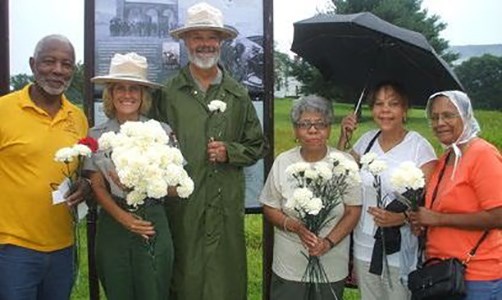Last updated: September 13, 2017
Article
Remembering the Niagara Movement at Harpers Ferry

2. Participatory methods help us embody the past. Participants re-enact the 1906 Niagara Movement pilgrimage to John Brown’s Fort (the engine house of the government armory in Harpers Ferry) where authorities captured him and his men. Some marchers go even further in the steps of historical activists, removing their shoes and walking around the Fort’s old foundation.
3. Partnerships encourage long-term engagement with NPS resources and programs.The local NAACP chapter, community churches, and the Harpers Ferry Historical Association work with the National Park Service to celebrate the Niagara Movement. For example, the Curtis Freewill Baptist Church, located on the former campus of Storer College, holds an evening service each year for the event.
4. It’s best to address conflict and controversy in the past head-on. Park interpreters link the 19th and 20th centuries by bringing the history of the 19th century abolitionist movement in conversation with John Brown’s beliefs and tactics, civil rights organizations of the early 1900s, and other anti-slavery activists and events.
5. It takes time to reflect on and cultivate new perspectives on the past. Each Niagara Movement pilgrim receives a carnation marked with a name of one of the original marchers. Participants carry these blossoms with them through the event and during a roll call place them at the foundation of John Brown’s Fort. These carnations are tangible reminders of their connection with and reverence for a storied history; the act of carrying and delivering them allows pilgrims to contemplate the gravity of this commemoration.
Back to the History Discover Events Gallery
Back to the Series: Best Practices for History Lessons and History Discovery Events.
